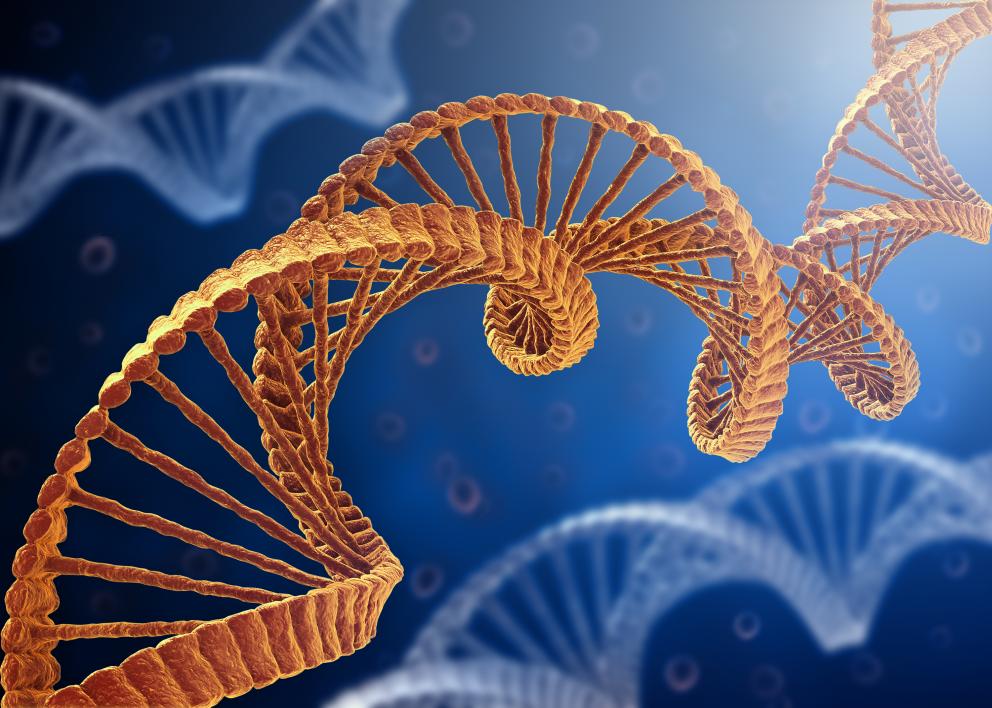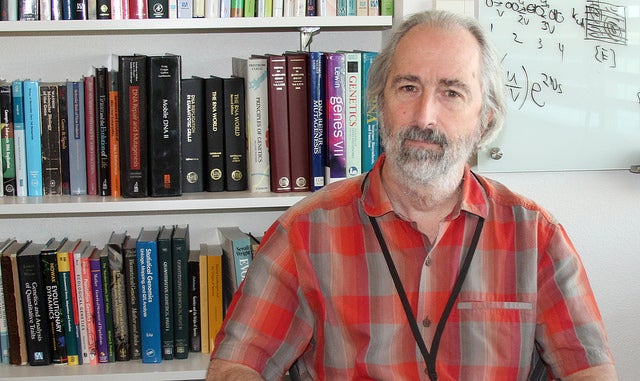ASU scientists explore mysteries behind diversity of DNA composition

In single-celled eukaryotes, yeast contain 38 percent G+C content, plants like corn have 47 percent, and humans contain about 41 percent. The big question is, why?
To make the iconic, twisted double helix that accounts for the diversity of life, DNA rules specify that G always pairs with C, and A with T.
But, when it’s all added up, the amount of G+C vs A+T content among species is not a simple fixed percentage or standard one-to-one ratio.
For example, within single-celled organisms, the amount of G+C content can vary from 72 percent in a bacteria like Streptomyces coelicolor while the protozoan parasite that causes malaria, Plasmodium falciparum, has as little as 20 percent.
In single-celled eukaryotes, yeast contain 38 percent G+C content, plants like corn have 47 percent, and humans contain about 41 percent.
The big question is, why?
“This has been one of the long-standing problems in genome evolution, and prior attempts to explain it have involved considerable arm waving,” said Michael Lynch, who leads a new Center for Mechanisms of Evolution at Arizona State University’s Biodesign Institute.
Is there something within the chemical nature of DNA itself that favors one nucleotide over the other, or does the bias of mutation pressure vary, and if so, why would this be different among species?
“In the absence of key observations on the mutation process, there has been a struggle to fathom what the mechanism is,” Lynch said
Michael Lynch’s group has now experimentally demonstrated that G+C composition is generally strongly favored, whereas this is often opposed by mutational pressure of various strengths in the opposite direction.
“On average, natural selection or some other factor (possibly associated with recombinational forces) favors G+C content, regardless of the class of DNA, size of a species’ genome, or where the species is found on the evolutionary tree of life,” Lynch said.
The study was published in the journal Nature Ecology and Evolution.
To err is universal
DNA mutations, errors in the genome that are introduced and passed along to the next generation, drive evolution. Over time, they provide the fuel for the invention of new adaptations or traits.
Scientists wanted a way to quantify the full spectrum of DNA mutations in the lab across a wide swath of species.
This can now be done due in part to new technologies that make DNA sequencing faster and cheaper. These developments are fueling a golden age of evolutionary experimental biology.
Driving evolution are DNA mutations, errors in the genome that are introduced and passed along to the next generation that over time provide the fuel for the invention of new adaptations or traits. ASU scientist Michael Lynch has shown these mutations occur more often at the G+C DNA chemical letters.
“We started with knowledge of the mutational spectrum that occurs at the genome level in about 40 species examined in my lab,” Lynch said. “You can use such information to calculate what the GC composition would be in the absence of selection. And then we can compare this null expectation with the the actual genome content, the difference being due to selection.”
In a tour de force experiment that is the largest survey to date, they examined every single DNA mutation across different species, sequencing billions of DNA chemical bases.
“This represented a very substantial work load, effort and cost that was necessary to test different evolutionary models with high statistical power,” said Hongan Long, a postdoctoral researcher who led the experiments.
They also took advantage of an analysis of 25 current datasets of mutations and 12 new mutation-accumulation (MA) experiments (many from their own lab), including bacteria and a menagerie of multicellular organisms including yeast, worms, fruit flies, chimpanzees and humans.
During each MA experiment, they performed complete genome sequencing of about 50 different bacterial lines that had been passaged through severe, single-cell bottlenecks for thousands of cell divisions.
“This single-cell passage of each line acts like a filter, eliminating the ability of natural selection to modify the accumulation of all but the most severe and deleterious mutations, giving us an effectively unbiased view of the mutation process,” Long said.
With each generation, they carefully measured the mutation rate, or every occurrence when just a single DNA letter is changed.
ASU Biodesign Institute scientist and School of Life Sciences professor Michael Lynch directs the new Biodesign Center for Mechanisms of Evolution. Photo courtesy Michelle Saldana-Chiago
This can happen in two ways: a single G or C DNA base pair being converted to the A+T direction; or the opposite can happen, with an A or T base switching in the G+C direction.
After all the numbers and data crunching, a striking pattern emerged between G+C content and the expectations based on DNA mutations.
“It turns out, they are correlated,” Lynch said. “The G+C composition is always higher than you expect, based on neutrality. That tells us that there is pervasive selection. So mutation drives the overall pattern, but selection for G’s and C’s over A’s and T’s boosts the genome content above the neutral mutational expectation.
"This seems to be almost universally true.”
The end of the beginning
Now that they’ve shown the G+C composition correlation, it has opened up the door to many more questions, and answers that remain elusive.
“One question is, ‘Why does the mutation spectrum change so dramatically across species?'" Lynch said. “Species don’t have the same mutation spectrum. There are species whose mutation profiles are more AT rich and others more GC rich. We still don’t know the mechanisms behind such divergence in the mutational spectrum.”
They may be due to simple differences in chemistry and biophysics.
One general force that may be of relevance is DNA stability, driven by the chemistry of the DNA letters. The forces that keep the DNA ladder intact are called hydrogen bonds. G+C pairs involve three hydrogen bonds, whereas A+T pairs involve only two.
“The prevailing thought is that more G+C content adds to genome stability,” Lynch said.
Another possibility is during reproduction, when the DNA strands intertwine from each parent to make a fertilized egg, mismatches can occur in the base pairing, leading to mistakes that DNA proofreading enzymes have to fix later on. Sometimes, a G can get changed to an A, or a T becomes a C, converting genes during this mismatch repair process.
“That’s generally thought to be biased towards Gs and Cs,” Lynch said.
Now, with their experimental setup in place, Lynch’s team is poised to further explore the mechanisms of evolution and fundamental forces behind this great mystery.
Support was provided by the Multidisciplinary University Research Initiative awards W911NF-09-1-0444 and W911NF-14-1-0411 from the US Army Research Office to M.L., National Institutes of Health awards R01-GM036827 and R35-GM122566 to M.L., to H.L., R01-GM51986 and R35-GM122556 to Y.V.B., F32-GM083581 to D.T.K. and National Science Foundation grant DOB 1442246 to J.T.L.
More Science and technology

Lucy's lasting legacy: Donald Johanson reflects on the discovery of a lifetime
Fifty years ago, in the dusty hills of Hadar, Ethiopia, a young paleoanthropologist, Donald Johanson, discovered what would…

ASU and Deca Technologies selected to lead $100M SHIELD USA project to strengthen U.S. semiconductor packaging capabilities
The National Institute of Standards and Technology — part of the U.S. Department of Commerce — announced today that it plans to…

From food crops to cancer clinics: Lessons in extermination resistance
Just as crop-devouring insects evolve to resist pesticides, cancer cells can increase their lethality by developing resistance to…

